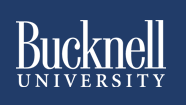
Faculty Help Sheets

 |
Blackboard Support: Faculty Help Sheets |  |
Why Use Blackboard: Course Document Repository
One of the original driving forces behind Blackboard was to make it possible for faculty members to put all their course content online, without needing to know HTML in order to do that. Basically, Blackboard became a very user-friendly way to respond to the faculty request: "I want to put my course on the Web, but I really don't want to take all that time to learn HTML. I'm a [fill in content expertise here], rather than a technology specialist." Blackboard makes it very easy for faculty to upload multiple kinds of content into a Blackboard course: Word files, PowerPoint files, digitized sound files, PDF files for student readings, etc. You can organize your files into specific content areas, based on the scheme you are using for the course itself: for example, our default menu of Announcements, Course Information, Faculty/Staff Info, Course Materials, and Assignments; or you can decide to organize your course into units, following (perhaps) the organization of a central textbook for the course: Unit 1, Unit 2,, etc. Here, for example, are two possible versions of Blackboard course menus:
Our default course menu assumes that you will upload materials about your course into the "Course Information" area: things you might hand out on the first day of class, such as your syllabus, course policies, etc. All the other documents you would hand out during the semester could go in the "Course Documents" section (for online readings, PowerPoint files, etc.) or in the "Assignments" area (for tests, essay assignments, etc.). In the "Alternative Menu" above, you would be organizing the course by units, and all materials relevant to that particular unit (documents, quizzes, homework assignments, etc.) would be placed in the unit's content area. Once your documents are uploaded into Blackboard based on whatever organizing schema you choose, students can access the documents, assignments, etc., from any computer that has Internet access, any time they want. Students can thus no longer complain that they lost their copy of your syllabus, the topics for Essay 1, etc. Your quick response would be, "All the content is on our class Blackboard site; go find it there." By uploading documents into Blackboard, you thus make them publicly available - but only to your students. In other words, since Blackboard is structured according to courses - with specific students enrolled in those courses - you can choose to limit access to your materials only to those students enrolled in your course. You can also choose to make particular areas of your course open to guests, while restricting other areas only to your students. In its use as a content management system, Blackboard can allow you to create an online repository of much of the materials for your course, either as a backup to documents that you hand out or as the main source for those documents. If you teach the same course in a subsequent semester, you can copy your folders from one course to another, or a Blackboard administrator can copy entire sections of your former course into a new Blackboard course. You would need to remove (and then re-upload) any documents that needed to be changed, but you would retain the course structure that you built, along with any documents that don't need to be changed. For more information about how to add materials into your course, see Adding a Content Item to Your Course and the related tutorial, Adding a Folder to Content Area. Written by Leslie Harris, originally for the Office of Instructional Technology at the University of Scranton. Revised with permission and adapted to the Bucknell University Blackboard environment. Last revised August 6, 2008. Please send questions or comments to itec@bucknell.edu. |